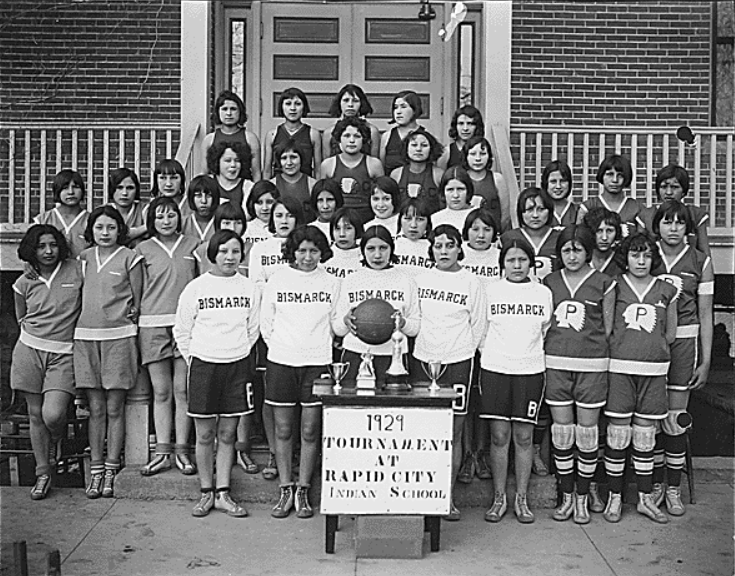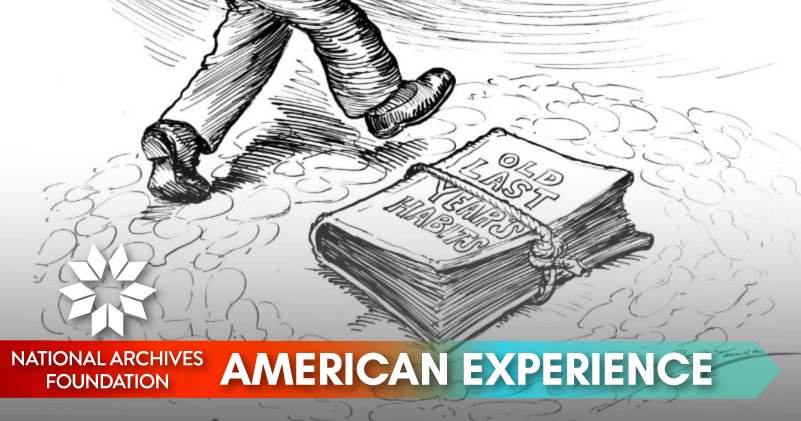March Madness

After the last 12 months, it seems befitting that this year’s March Madness has been full of upsets and Cinderellas. I, like many round ball enthusiasts, have been yelling at my TV as my brackets go bust.
Basketball, which was invented by physical education teacher James Nasmith, who was teaching in Massachusetts at the time, may not be America’s pastime (👀 baseball), but it is certainly one of America’s obsessions.
The National Archives houses many paper records and objects from basketball’s history. Living large in the Archives holdings is one of Shaquille O’Neal’s Reebok basketball shoes. Presented to President George W. Bush in 2001 and measuring up at size 22, it is a fitting foundation for a giant of the modern game.
I know I am not the only one thrilled that it is officially tournament time. So, while you prepare for the Final Four this week, don’t forget to take a look at a few stories about one of my favorite sports.
🏀

Patrick Madden
Executive Director
National Archives Foundation
The One and Only

The Harlem Globetrotters is a world-renowned exhibition basketball team that was established on Chicago’s South Side in 1926, when the National Basketball Association was not drafting black players. Originally named the Savoy Big Five, for the Savoy Ballroom where they played, the team adapted its new name in 1928 and took the show on the road. In 1940, they won the World Professional Basketball Tournament. They won again in 1948 against the Minnesota Lakers (now the Los Angeles Lakers), one of the best all-white teams in the world.
Pool Report on President Meeting Harlem Globetrotters
National Archives Identifier: 7337225
Since then, the Harlem Globetrotters have played all over the world, averaging 450 games per year, and spreading goodwill throughout the globe. The games are a combination of performance and athletic expertise, with the players demonstrating exceptional ball handling and shooting skills. The team plays against an opposing team, and the outcome of the game is not predetermined, although the Globetrotters certainly win most of the time.
In 1974, President Gerald Ford hosted the Harlem Globetrotters at the White House.In his remarks, President Ford said, “Somebody suggested that Congress ought to pass some bills like you pass the ball.”
Spinning the Globe: The History and Legacy of the Harlem Globetrotters
(1 hour 16 minutes 30 seconds)
Source: NARA YouTube Channel
The Dream Team

National Archives Identifier: 6417851
The 1992 Summer Olympic Games, held in Barcelona, Spain, were the first to allow professional athletes to compete. That summer, the United States assembled a basketball team comprised almost entirely of professional basketball players—the “Dream Team.” The roster included Magic Johnson of the Los Angeles Lakers, Michael Jordan and Scottie Pippen of the Chicago Bulls, Patrick Ewing of the New York Nicks,

David Robinson of the San Antonio Spurs, John Stockton and Karl Malone of the Utah Jazz, Charles Barkley of Philadelphia 76s, Chris Mullin of the Gold State Warriors, and Larry Bird of the Boston Celtics. Christian Laettner, who played for Duke University, was the only college athlete chosen for the team. In Barcelona, the Dream Team won every one of its eight matches and scored more than 100 points in every game.
Champions at the White House

In 1963, John F. Kennedy hosted the Boston Celtics at the White House after the team won the NBA championship. That visit was the start of a tradition that continues to this day. The National Archives has substantial holdings of photographs, documents and audio that record such visits. In 1987,President Ronald Reagan hosted the Tennessee Volunteers women’s basketball team, who had won that year’s NCAA championship, in the Rose Garden.
You can even listen to President Reagan’s remarks from that day!
(8 minutes, 6 seconds)
National Archives Identifier: 161352430
Inventor of Basketball

National Archives Identifier: 12004702
In 1891, Dr. James Nasmith, a Canadian educator who was teaching physical education at the YMCA International Training School in Springfield, Massachusetts, invented a new game that could be played indoors, when the weather was too bad for outdoor sports. He went on to establish the basketball program at the University of Kansas in Lawrence.
An Enduring Tradition

Source: NARA’s Pieces of History blog
Much has been written aboutIndian boarding schools, which were quite openly designed to destroy Indian cultures. Native children were forcibly removed from their homes and taken to boarding schools, where their hair was cut and their native clothing was taken from them, and they were forbidden to speak their native languages or practice their religions. One positive legacy of the Indian boarding school era, however, is that many students were introduced to basketball at school. In a letter to his father, written on January 16, 1929, Curtis Etsitty wrote, “We have pitcher [sic] on the wall. And we made books too. They have basketball game too. Please send me some mutton. How are the snow on ground. How are my brothers and sisters.”

In 1904, the Fort Shaw Government Industrial Indian School’s girl’s basketball team won the World Championship at the St. Louis World’s Fair, defeating a team from Central High School in St. Louis. The boarding school was about 25 miles west of Great Falls, Montana. The women returned home to great acclaim, and people on the reservations began to play basketball in earnest. Today, on Indian reservations across the United States, basketball is played with avid abandon by students from elementary through high school.







